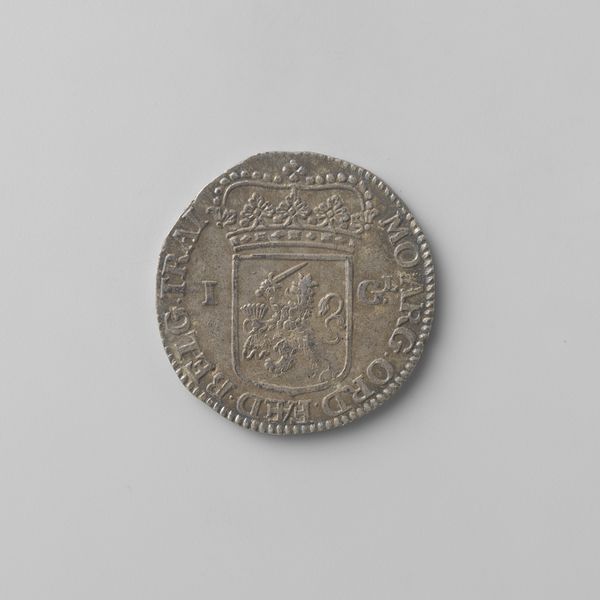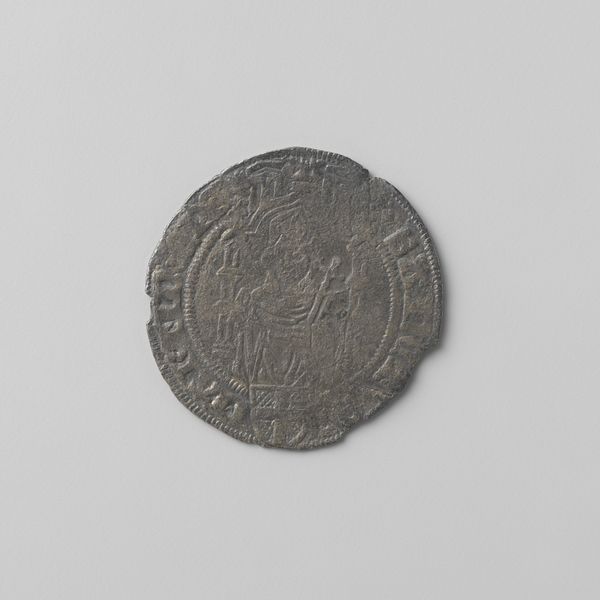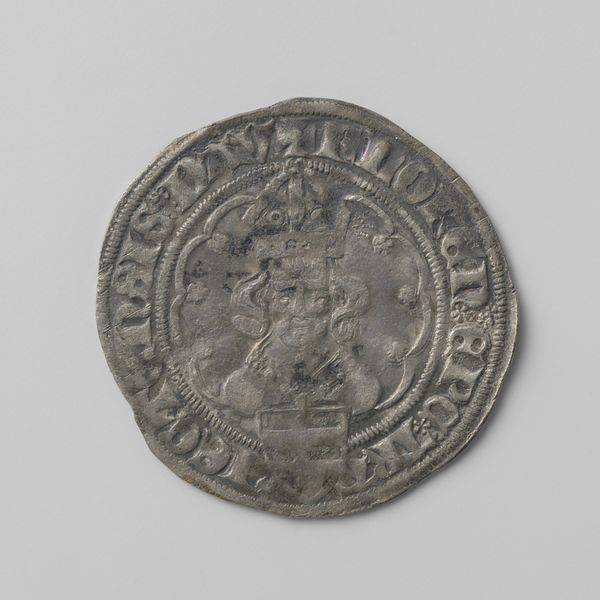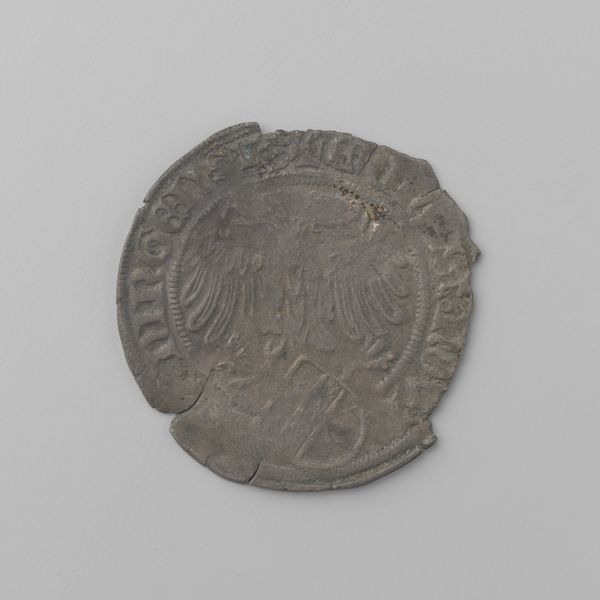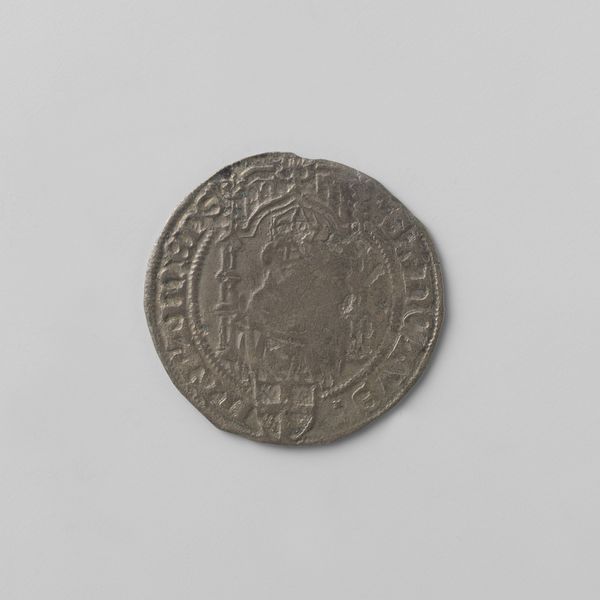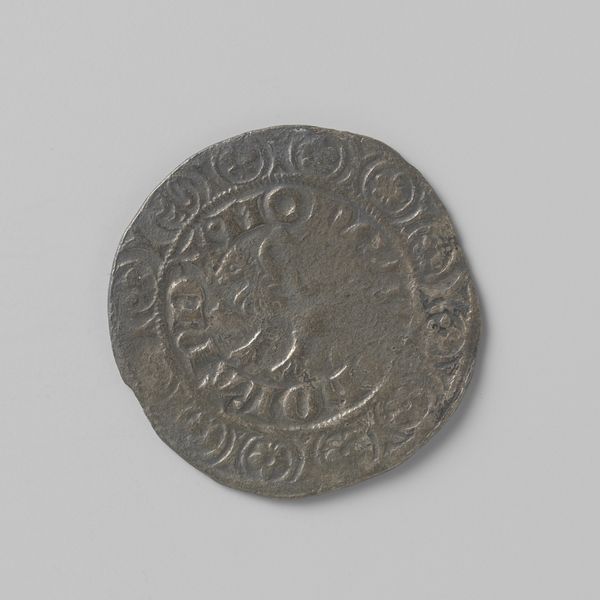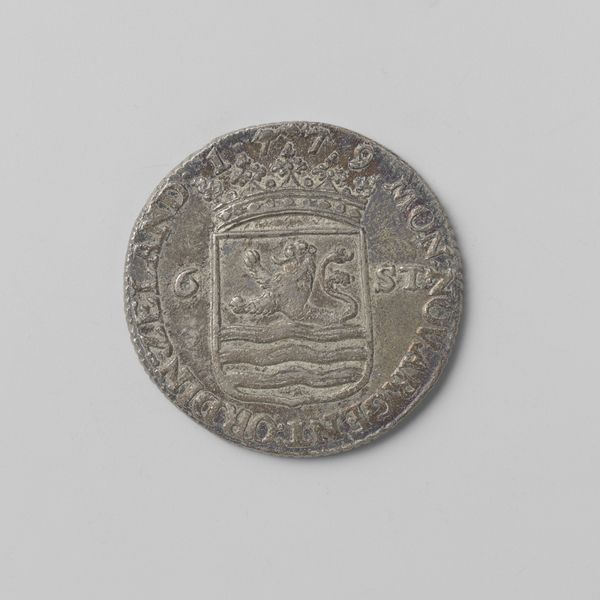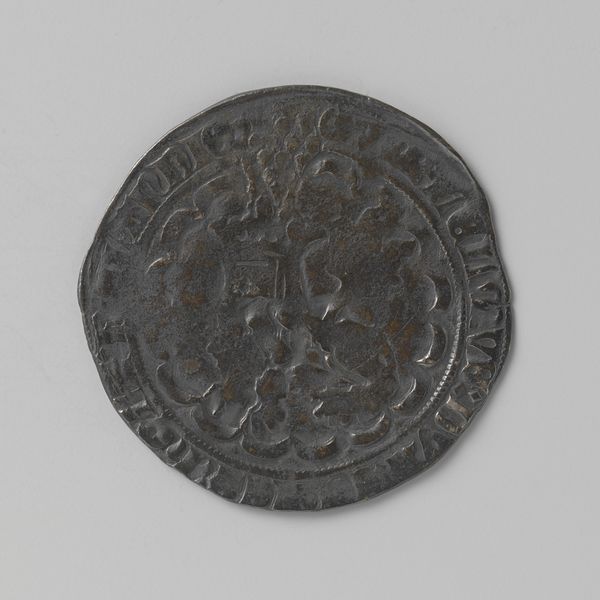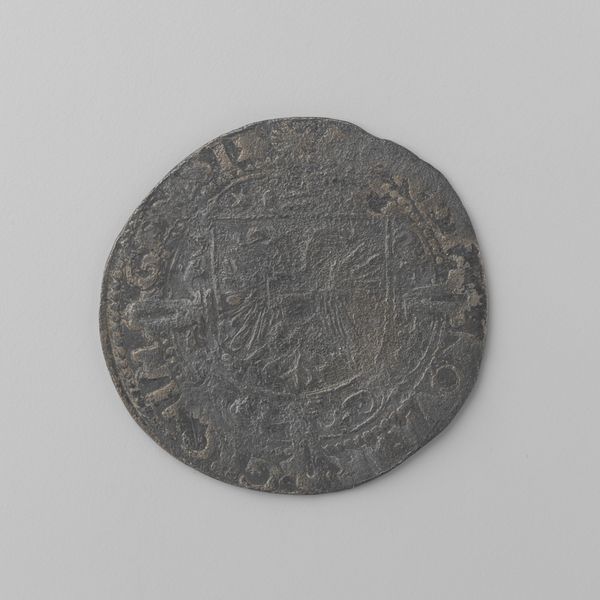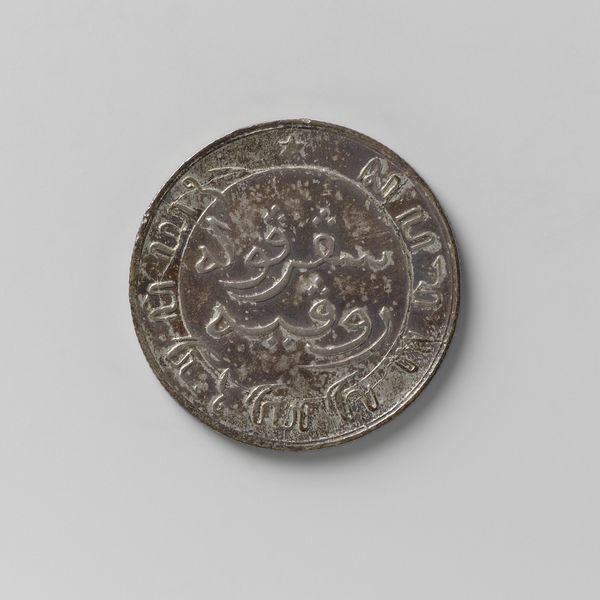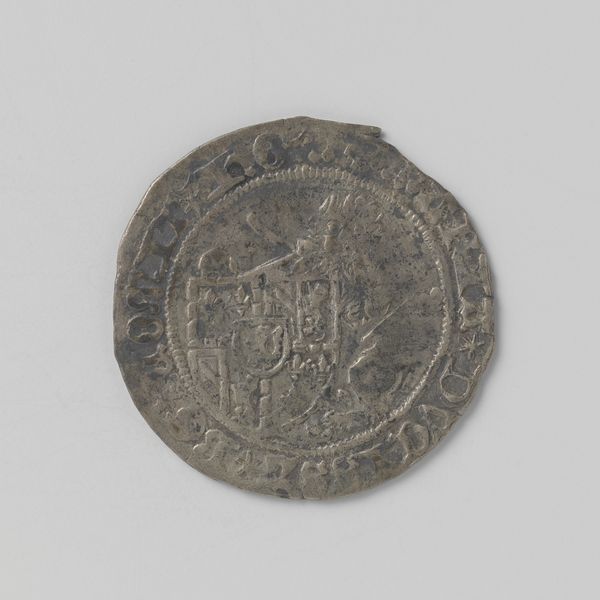
Utrechtse dubbele plak van Frederik van Blankenheim, 1393-1423 1393 - 1423
0:00
0:00
silver, metal
#
medieval
#
silver
#
metal
#
ancient-mediterranean
#
coin
Dimensions: diameter 3.3 cm, weight 3.54 gr
Copyright: Rijks Museum: Open Domain
Editor: So, this is a Utrechtse double "plak", a coin really, dating from between 1393 and 1423, during Frederik van Blankenheim’s rule. It’s made of silver. I’m struck by how something so small could carry so much power and symbolism. What stories does this coin tell from your perspective? Curator: Well, a seemingly insignificant object like this reveals volumes about the social and political landscape of the late medieval period. The "plak" was not merely a medium of exchange but a statement of sovereignty and authority. Editor: How so? Curator: Think about it: Van Blankenheim, as bishop of Utrecht, is imprinting his authority onto this coin. The imagery chosen – the crest, the lettering – are deliberate choices intended to convey power and legitimacy. The coin literally put his image into the pockets of the people. What impact might the circulation of these coins have had on public perception of the Bishop? Editor: That makes sense! So it's not just about its monetary value, but about building a public image. It's fascinating to consider how everyday objects are tools for spreading ideology. I hadn't thought about it in those terms before. Curator: Exactly! And consider who controlled the production and distribution of these coins. That control represented economic and political clout. Coinage was deeply connected to public power. We can even analyze its wear and tear as a kind of historical fingerprint, revealing how widely it circulated and the extent of its use. Editor: I’m definitely going to look at coins differently from now on! It shows me that even everyday objects can be seen in different ways, holding unique artistic merit.
Comments
No comments
Be the first to comment and join the conversation on the ultimate creative platform.
